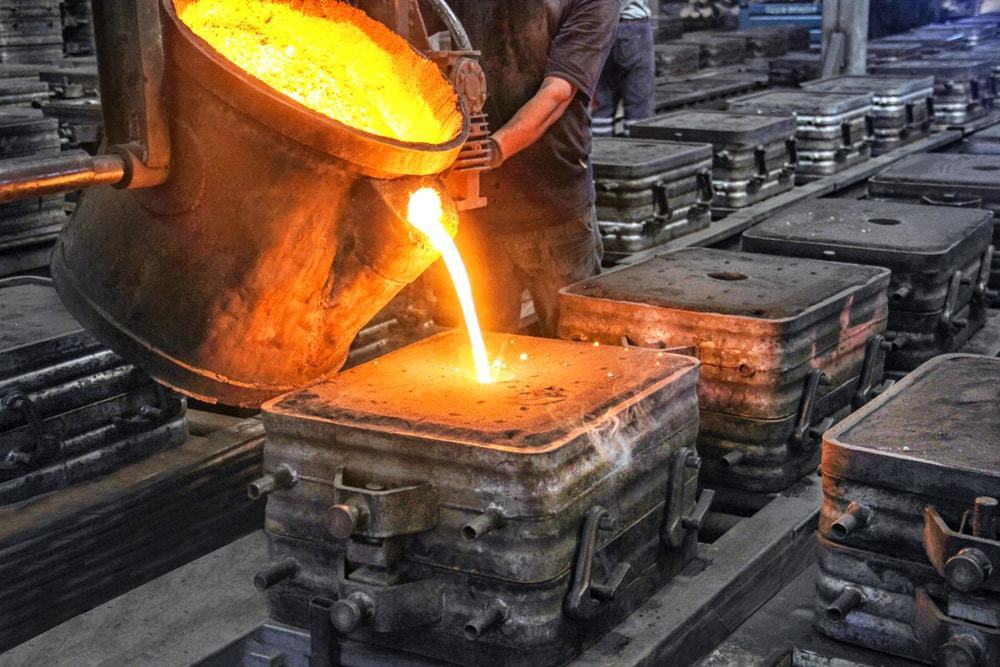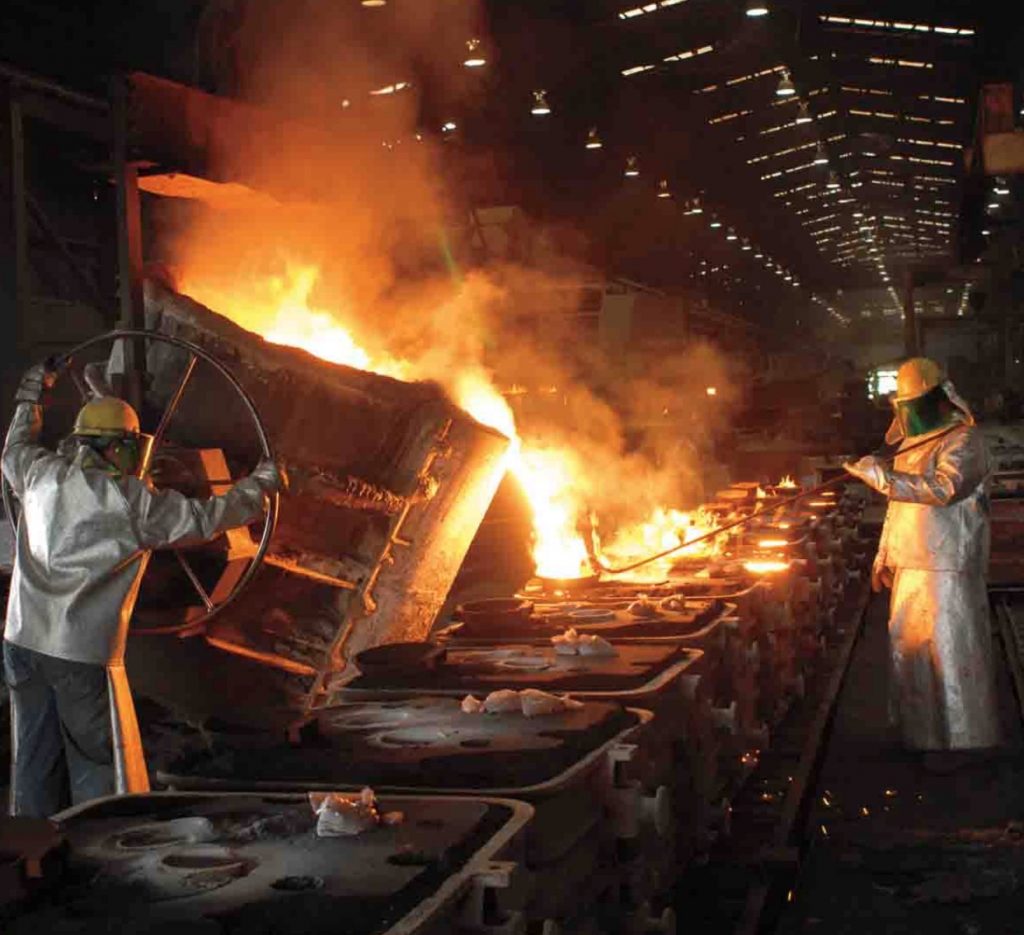The Duty of Metal Casting in Advancing Manufacturing Technologies
Metal Casting have actually especially influenced the advancement of making technologies. They provide special layout adaptability, allowing the development of complex geometries essential for numerous applications. Modern spreading strategies are being enhanced by developments like 3D printing and automation. These advancements not just boost effectiveness but also address difficulties in precision and sustainability. As industries remain to develop, the duty of Metal Casting continues to be important in shaping their future. What exists ahead in this dynamic area?
The Evolution of Metal Casting Methods
As the need for precision and performance in production has expanded, the advancement of Metal Casting strategies has gone through substantial improvement. Historically, Metal Casting started with basic methods such as sand casting and lost-wax spreading, which allowed artisans to produce detailed forms. Gradually, developments in modern technology introduced processes like die casting and investment spreading, boosting accuracy and reducing waste. Aluminum Foundry. The introduction of computer-aided layout (CAD) and simulation software changed the drawing board, enabling manufacturers to expect prospective concerns and optimize layouts prior to manufacturing. In addition, the development of new products, such as advanced alloys and compounds, has actually widened the range of applications for Metal Casting. Automation and robotics have more polished casting processes, enhancing uniformity and effectiveness. Consequently, the Metal Casting sector has actually adapted to fulfill the demands of modern-day production, concentrating on sustainability and innovation to stay competitive in an ever-evolving market
Applications of Metal Casting in Secret Industries
The advancements in Metal Casting strategies have actually opened a wide variety of applications throughout numerous markets. In the automotive field, Metal Casting are important for generating engine blocks, transmission real estates, and various other crucial elements that need high stamina and sturdiness. The aerospace market makes use of spreadings for detailed components like wind turbine blades and architectural parts, making sure lightweight yet robust options for airplane.

The building industry utilizes Metal Casting for structural aspects such as light beams and installations, contributing to the integrity of structures and infrastructure. In the energy market, castings play a crucial role in making elements for wind turbines and power generation equipment, boosting efficiency and integrity. On top of that, the clinical field take advantage of accuracy spreadings made use of in medical tools and prosthetics, demonstrating the versatility of Metal Casting across diverse applications. This wide application highlights the value of Metal Casting in modern-day production methods.
Advantages of Metal Casting in Modern Production
Metal Casting provide various benefits that greatly enhance modern manufacturing procedures. One vital advantage is style flexibility; Metal Casting permits the creation of complex shapes and complex geometries that are usually tough or difficult to accomplish with various other producing methods. This ability makes it possible for suppliers to enhance item designs for functionality and performance.
In addition, Metal Casting can sustain a vast array of products, consisting of aluminum, steel, and iron, which can be customized to satisfy certain mechanical homes and deterioration resistance requirements.

Cost-effectiveness is one more remarkable advantage; Metal Casting procedures can produce huge amounts of get rid of marginal product waste, thereby lowering manufacturing costs.
The longevity of cast steel components adds to the long life of products, decreasing the requirement for frequent substitutes. Overall, the benefits of Metal Casting significantly contribute to effectiveness, sustainability, and technology within modern manufacturing settings.
Innovations Driving the Future of Metal Casting
While standard Metal Casting methods have offered the market well for decades, recent technologies are poised to change the field. Developments such as 3D printing modern technology permit quick prototyping and the manufacturing of complicated geometries that were previously unattainable. These developments not just boost style flexibility yet likewise reduce waste and reduce preparations. Furthermore, the integration of automation and robotics you could look here in casting processes is improving operations, enhancing accuracy, and enhancing worker safety and security. Moreover, the development of new alloys and composite materials is making it possible for the production of more powerful, lighter spreadings customized for details applications. Digital technologies, including artificial intelligence and artificial intelligence, are maximizing spreading criteria and anticipating maintenance, driving better top quality control. Jointly, these technologies are pressing the boundaries of Metal Casting, cultivating better performance and sustainability in production, and placing the industry for future development and competition.
Obstacles and Solutions in Metal Casting Processes
As innovations in Metal Casting modern technology remain to reshape the industry, various challenges continue to be that producers should deal with to totally take advantage of these innovations. One substantial concern is the variability in product properties, which can bring about irregular quality and performance. This irregularity commonly arises from changes in raw products and handling problems. Additionally, the increasing expenses of power and products pose financial restraints, pushing suppliers to look for extra efficient procedures.
To battle these difficulties, business are progressively embracing automated systems and progressed simulation techniques to boost accuracy and consistency. Implementing quality assurance measures throughout the production procedure likewise aids in identifying defects early. Furthermore, buying study for alternative products may enhance and lower costs sustainability. By dealing with these obstacles with cutting-edge options, the Metal Casting sector can check my site improve efficiency and keep competition in the evolving production landscape.
Often Asked Inquiries
What Products Are Generally Utilized in Metal Casting Procedures?
Common products made use of in Metal Casting procedures consist of aluminum, iron, bronze, and magnesium. Each product has one-of-a-kind homes that accommodate different applications, boosting the versatility and performance of the final actors items in numerous sectors.
Exactly How Do Environmental Rules Influence Metal Casting Operations?
Ecological guidelines force Metal Casting procedures to embrace cleaner innovations and methods, commonly raising production prices. Conformity might bring about cutting-edge processes that lower waste and exhausts, ultimately promoting sustainability within the Metal Casting industry.
What Are the Precaution in Metal Casting Facilities?
Safety steps in Metal Casting centers consist of proper air flow, individual protective devices, regular safety training, devices upkeep, and adherence to safety and security policies, making certain a secure environment for employees while decreasing risks connected with hazardous products and processes.
Just How Is High quality Controlled in the Steel Casting Process?
Quality assurance in Metal Casting entails strenuous examinations, including aesthetic assessments, dimensional checks, and product testing. Adherence to market standards and carrying out high quality Homepage management systems guarantees that spreadings satisfy specific requirements throughout the production process.
What Is the Future Task Expectation for Metal Casting Professionals?
The future task overview for Metal Casting specialists appears encouraging, driven by improvements in technology and boosting demand throughout different industries (Aluminum Castings). Growth in automation and sustainable techniques will likely create brand-new possibilities in this industry
Historically, Metal Casting began with straightforward techniques such as sand casting and lost-wax casting, which permitted craftsmens to create intricate shapes. Over time, advancements in innovation introduced procedures like die spreading and financial investment spreading, boosting accuracy and minimizing waste. In enhancement, the medical area advantages from accuracy spreadings utilized in medical tools and prosthetics, demonstrating the versatility of Metal Casting across varied applications. Metal Casting supply many benefits that considerably boost modern production procedures. Typical materials used in Metal Casting procedures include aluminum, magnesium, bronze, and iron.